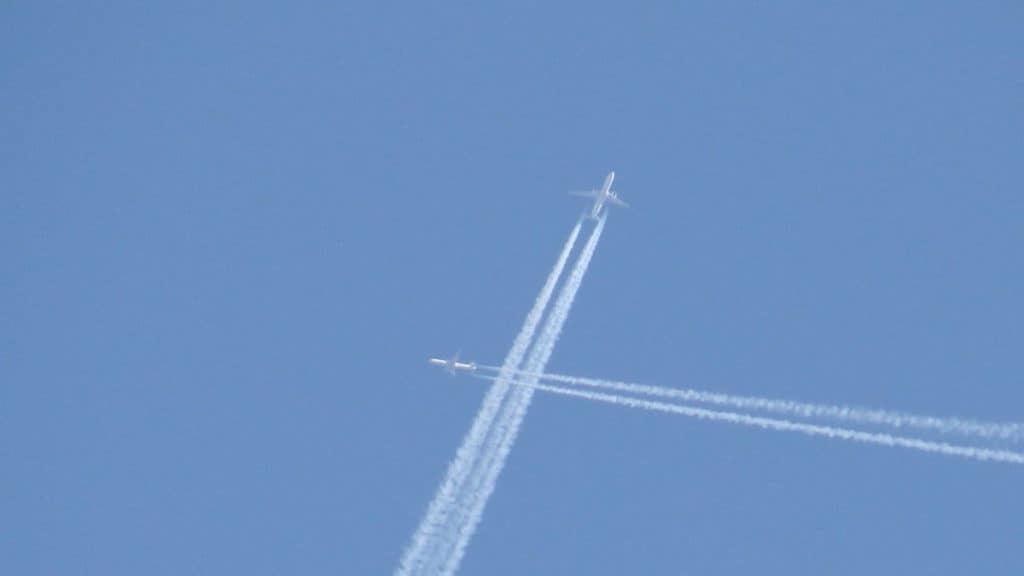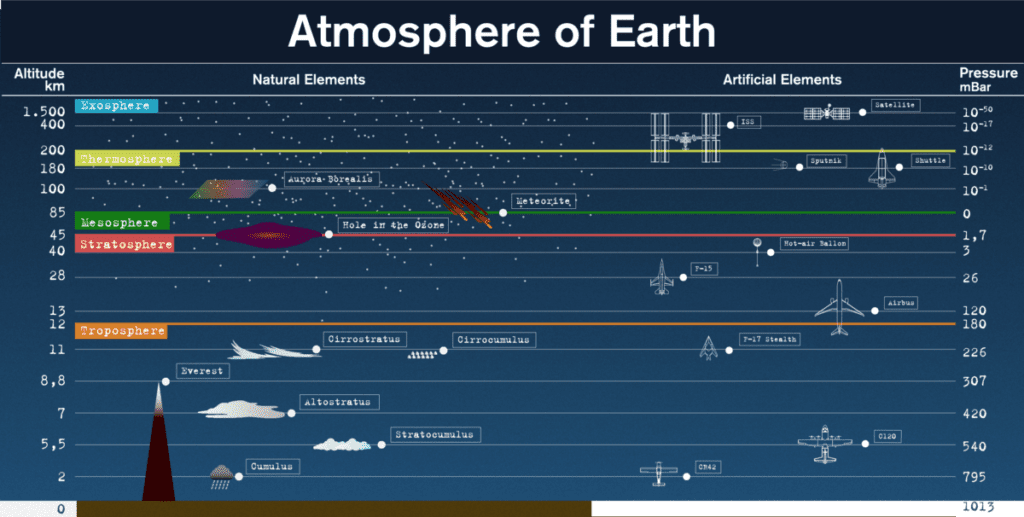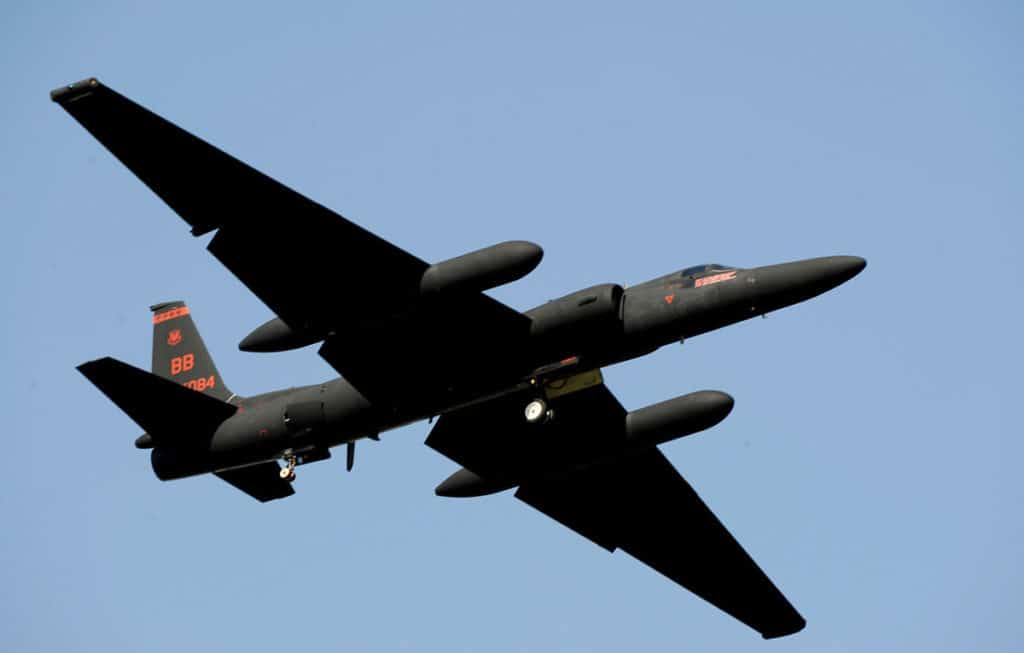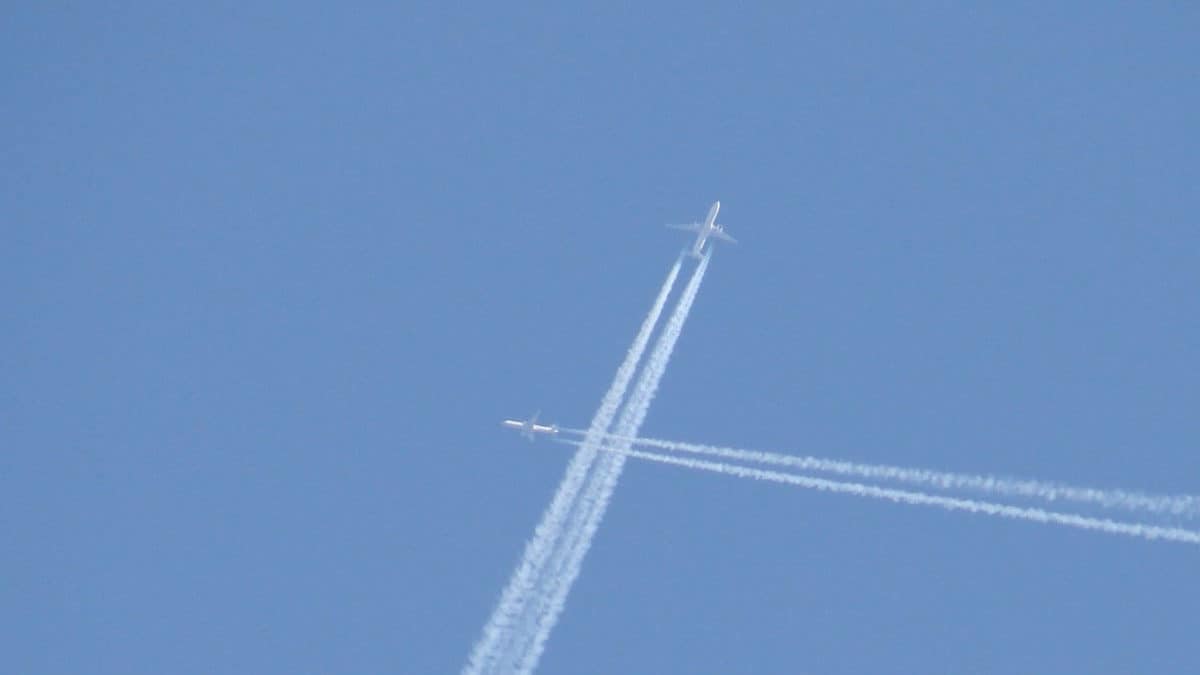
Have you ever seen the videos people take from the window seat of another airplane flying with them at a lower altitude or crossing below them? We all know airplanes fly high but why are all the airplanes flying at different altitudes?
Airplanes are flown at different altitudes based on the direction of flight, wind speed & direction, and traffic flow. The height of each flight is selected by the airline’s flight planning department to burn as little fuel as possible. The pilots and air traffic control then try to accommodate each request.
There is a method to the madness and to try and fit in as many aircraft into a given airspace the air traffic control system has some rules and guidelines that they use. One of those is altitude.
Commercial passenger jets generally fly at an altitude between 30,000 and 40,000 feet. There are several reasons why pilots would want to fly their planes at such altitudes but by far the main reason is the air becomes thinner as the altitude gets higher. This produces less drag allowing the plane to fly faster while burning less fuel.
Engine manufacturers develop their engines to run at optimum fuel efficiency in this altitude range. As you can imagine, every airline wants their planes flying in that range!
For an aircraft like the Boeing 777-300ER on a cross-continent, 15 hour flight, there are a large number of variables to consider, some of which can change rapidly and may have a big impact on the flight and its fuel consumption.
Here are a few key factors that determine the altitude at which a plane will fly:
Fuel Efficiency
By far the biggest reason for the high altitude that a plane should fly lies in fuel efficiency. The thinner air creates less drag on the aircraft, which means the plane can use less fuel to maintain its speed.
However, the jet engines also need oxygen to work, since they need it for optimum combustion. So, flying too high can reduce engine efficiency as it will burn more fuel. There is that perfect altitude for that flight leg based on the current atmospheric conditions and weight of the airplane that will burn the least amount of fuel.
Avoiding Air Traffic and Hazards
The first reason is higher altitudes mean that the pilot can avoid birds, light aircraft, and helicopters, which all fly at lower altitudes. This is one of the reasons why airplanes seem to climb at a very steep angle as soon as they lift off from a runway.
The second is traffic separation. The main job of the air traffic controller is to maintain separation between aircraft. With over 45,000 planes taking flight in the U.S. every day and 5,400 in the sky at any given time it is a busy place above our heads.
In the US, the air traffic control service is provided by Federal Aviation Administration. It is managed by 520 airport traffic control towers and en route centers manned by over 14,000 trained air traffic controllers. Coordinating many arrivals, departures, and flights without collisions requires precise planning and air traffic management.
To help keep traffic separated, air traffic controllers can separate aircraft using different altitudes. Aircraft flying below 29,000 feet should have a vertical separation of 1,000 feet and above this separation increases to 2,000 feet.
This is why you may see an aircraft cruising below you when you look out your airplane window. They seem a lot closer than 2,000 feet but up in the air this can seem really, really close!
Weather
The weather has a significant impact on flying. To avoid weather anomalies, commercial passenger jets normally cruise above the Troposphere, to avoid any weather events like rain, snow, and thunderstorms as they are generally concentrated below.

A bumpy ride is unpleasant to travelers and pilots try their utmost to avoid air streams that may cause turbulence to the aircraft. When planes run into air pockets, strong winds, and heavy clouds, pilots may request a different altitude which the air traffic controllers may grant depending on the air traffic around the aircraft.
Ensuring a smooth ride is usually the second factor after fuel conservation that airlines pay close attention to. Turbulent rides make passengers nervous and scared and it can cause injuries to flight attendants when trying to move about the cabin serving refreshments.
Tailwinds, Headwinds
A tailwind is a wind that blows in the direction of travel of a plane, while a headwind blows against the direction of travel. A tailwind increases the plane’s ground speed (The speed of the plane’s shadow moving across the ground) and reduces the time required to reach its destination, while a headwind has the opposite effect.
Let’s assume your airspeed is 100 knots. A tailwind of 20 knots will give you a ground speed of 120 knots. But a headwind of 20 knots will reduce your ground speed to 80 knots.
In the winter the jet stream dips down over North America. That is why it may take 6 hours to fly from JFK to SFO but only 5 hours on the return flight from SFO to JFK. This is headwinds and tailwinds in action.
Pilots prefer to have tailwinds while cruising and may request a different altitude that has a better tailwind to help fine-tune their fuel burn. Again, it will be up to air traffic control to accommodate this request.

Join My Newsletter & Get Great Tips, Information and Experiences To Help You Become a Superb Pilot!
Designated Cruising Altitudes
For smaller aircraft that wish to or need to cruise below 18,000ft MSL (Mean Sea Level) the FAA has set rules of altitudes the pilot must choose to fly at based on the magnetic heading they are flying. This is known as an IFR Cruising Altitude and once they pass above 3000 feet the pilot must obey this ruling:
For pilots flying Eastbound on a heading between 001° to 179° magnetic they must fly at ODD Thousands of feet – 5000ft, 7000ft, 9000ft, 15000ft etc
For pilots flying Westbound on a heading between 180° to 360° magnetic they must fly at EVEN Thousands of feet – 4000ft, 6000ft, 10000ft, 16000ft etc.
Learn More…
Try These Articles:
* Why Are Airplane Engines So Expensive?
* Why Do Airplanes Fly in a Curve?
Why Do Planes Fly So High?
Commercial Airplanes are flown between 30,000 & 40,000 feet because drag caused by friction of the air on the fuselage is minimal. It requires less power to propel the plane through the air resulting in less fuel burned. Fuel is the biggest operating cost for an airline and any reduction is welcomed.
Although the thinner air improves flight efficiency, there is a point at which the air becomes too thin which results in engines not getting enough oxygen. Less thrust means that the wings are not producing sufficient lift. It is also difficult to restart an engine at a higher altitude, in the event of its failure due to the lack of oxygen.
The highest an airplane can fly is known as its service ceiling. Just like any factor in aviation, a buffer is placed in between what is the normal cruising altitude and the service ceiling to ensure safety is maximized at all times.
Here is a table of service ceilings of the world’s major commercial aircraft:
| Aircraft | Service Ceiling (feet) |
| Airbus A320 | 41,000 |
| Boeing 757 | 42,000 |
| Boeing 737 | 37,000 |
| Boeing 737 – Max | 41,000 |
| Embraer E-jet | 41,000 |
| Airbus A330 | 41,100 |
| Airbus A340 | 41,450 |
| Airbus A350-900 | 43,100 |
| Airbus A380 | 43,000 |
| Boeing 747-400 | 44,947 |
| Boeing 747-8 | 43,100 |
| Boeing 777 | 43,100 |
| Boeing 787 | 43,100 |
| Gulfstream G650 | 51,000 |
| Concorde | 60,000 |
Some Aircraft Can Fly Higher
Smaller, private jet aircraft have more capabilities to fly higher. Many smaller corporate jets are rated to ceilings of 51,000 feet. For commercial passenger aircraft, the out-of-service Concorde was by far the champion, cruising up to 60,000 feet, and military planes, especially reconnaissance planes such as the Lockheed U-2 can fly up to 70,000 ft.

Smaller fuselages allow for higher altitudes because they can be built stronger to withstand the pressure difference between the inside and outside of the airplane. The engines are also smaller and are designed to operate at higher altitudes to allow biz jet manufacturers to get the greatest range out of their planes.
The range is one of the biggest selling features on most small jets.
Learn More…
Try These Articles:
* Can a Commercial Plane Fly to Space?
* How Do Pilots Know Where Other Aircraft Are?


